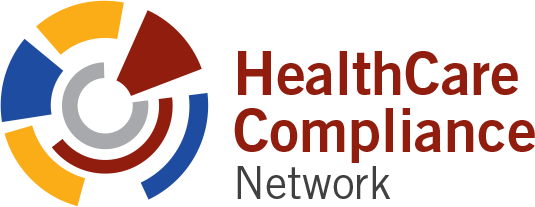A year that has been unique in all our lives created compliance challenges across the board for healthcare businesses. We have asked HealthCare Compliance Network’s senior management to share brief observations on the compliance industry as they saw it from the field-level this year.
Michael Manere, CHC, CHSP
Principal
In a year when many of us remained separated from the level of personal contact we were accustomed to, it seems ironic that there was a strong demand for face-to-face compliance services. The emphasis on workplace safety was ignited by the pandemic. Drills, and on-site or video training that proved that safety protocols were understood, and working were critical for the peace of mind of employees and patients alike. Compliance services took a place front and center for healthcare practices looking for a sense of security in the most trying times.
Overall, the market matured in its view of compliance. More than an ad hoc process of checking boxes to avoid regulatory fines, it assumed a broader role in healthcare organizations who are seeing the benefits of a “culture” of compliance both in safety and financial stability.
Wiks Moffat, CHC
Principal & Executive Vice President, Marketing
There was a lot of action on the part of the Government that impacted our industry this year. The new payment model for Accountable Care Organizations (ACOs) and Direct Contracting Entities is one good example. Then there was OSHA’s Emergency Temporary Standard and many other new or revised regulations that were enacted. And I can tell you from sitting on countless industry panels with OIG, OSHA even the FBI, what comes next is enforcement.
It makes sense. Enforcement returns about $13 on every dollar spent. And we all know the government needs the money. Payors are turning up the heat too, through more audits and claw backs. This year our Law Firm partners became increasingly proactive in fronting our services to their clients. Advanced compliance services before the Feds show up in the lobby for and audit are much cheaper than paying fines and recovering from bad press coverage.
Other players that we saw more of this year were Private Equity Companies. They now see compliance services as a critical part of due diligence for acquisitions. They are also leveraging new strategies to make compliance a driver of increased revenue in their portfolio companies. Smart stuff!
Todd McDonagh
Principal & CEO
I’m very hands-on with our clients, and I can tell you that a lot happened at the street level this year. Obviously COVID-19 had significant impact on bottom lines at the healthcare organizations we serve. But in many cases, it was not in the ways that were expected. Of course, even temporarily closing a practice hurts revenue. But when physician offices reopened, outfitted, trained for safety, and started seeing patients again there were unforeseen challenges.
For one, new regulations like OSHA’s ETS made a practice’s commitment to employee and office safety highly meaningful. Compliance programs had to be proactive or there was a risk of complaints, regulatory fines, even lawsuits.
Another big driver of change this year was the expansion of modes of delivery of care. Telehealth and video appointments dramatically increased. And you know what comes next – audits for these new modalities.
The last thing I want to mention is the impact on Human Resources caused by the pandemic. Many clients reported that some staff didn’t want to come back after they reopened offices. Hiring and training replacements is very challenging in this job market. The new obstacle for many physician practices is delivering care with fewer bodies. Their record of commitment to compliance with safety regulations is now critical for them to attract and retain staff.
Mitchell Brie, CHC
Vice President of Performance
Looking back on this year the first things that strikes me is the acceleration of practice consolidations, particularly among specialties. Orthopedics is a good example. I saw big groups bringing surgery, PT, anesthesia, imaging, chiro, and other ancillaries all under one tent. Orthos who were previously out of network, are increasingly joining up. All of this created new compliance challenges. Coding for patient hand-offs within the practice, determining which practitioner could order which procedures, is complex. Given that most Electronic Health Record software is still working on 1995 or 1997 coding guidelines, we saw a lot of requests for training and audits to make sure things were being properly coded.
And of course, all the consolidation and acquisitions increased the amount of due diligence that is being done in healthcare. The change I saw this year was that smart companies were moving compliance due diligence forward in the acquisition process. Everyone expects that financial and legal due diligence are going to be central to an acquisition. But doing the compliance analysis first can identify risks that will kill or greenlight a deal before the larger investment in the legal and financial analysis. It really makes sense.
Lorraine Ludwigsen
Chief Operating Officer and Executive Vice President of Compliance
It seems to me that there has been some complacency in the smaller practices regarding compliance discipline due to COVID-19. Providers assumed that the government wouldn’t look at them. That has changed. There were several drivers.
Telehealth and other platforms for remote visits, diagnostics and treatment accelerated due to the pandemic. Coding for telemedicine had to be learned, and security for telephonic and video or computer-based appointments became a new challenge. Remote connections for staff working at home also had to be made secure.
Then there was the emergence of bad actors like cyber hackers who took healthcare practices and entire systems hostage.
Smart healthcare practices are doing complete Security Risk Assessments. They are asking, “Where are our data leaks or points of vulnerability?” The answer is almost everywhere. Practices acting proactively stand the best chance of defense against hackers and avoidance of regulatory fines.

